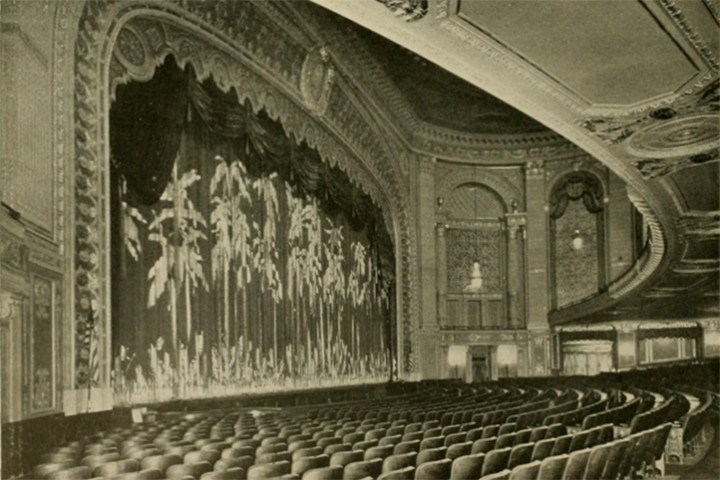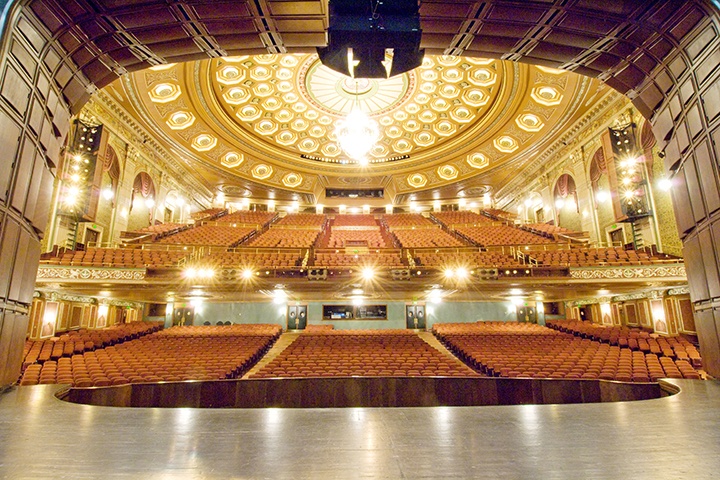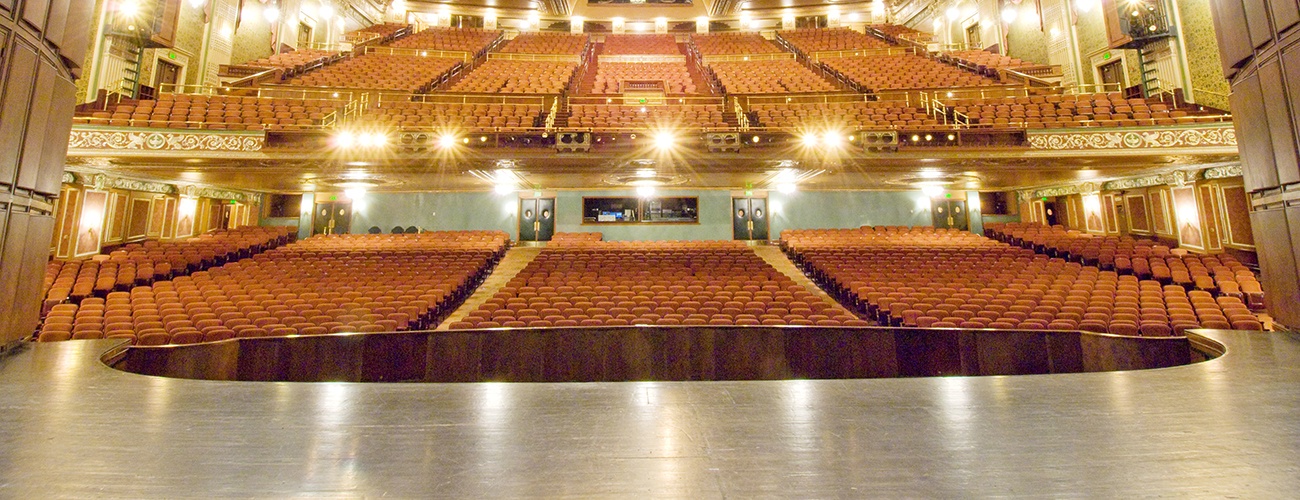For more than ninety years, the Benedum Center has been “Pittsburgh’s Palace for Amusement.” Over those nine decades, every single show, act, and performer that played the theater shared one common bond — they all looked out on the audience from the same grand stage.
What we now know as the Benedum Center for the Performing Arts first opened to the world as the Stanley Theatre on February 27, 1928. For the first few decades of its life, the Stanley played host to movies, theater productions, music acts, and more.
In 1977, after being purchased by DiCesare Engler Productions, the Stanley became a home for one thing and one thing only: rock concerts. Queen. The Grateful Dead. AC/DC. Pink Floyd. The list of iconic names goes on and on. But that’s a story for another day.
In 1984 the Stanley was purchased by the newly-formed Pittsburgh Cultural Trust as part of H.J. Heinz II’s sweeping vision for a revitalized Downtown. The theater underwent a three-year, $43 million restoration to return the space to its original 1928 glory, all while making some much-needed improvements. It reopened as the Benedum Center for the Performing Arts in 1987.
Which brings us to the subject of this particular deep-dive: the stage.

The freshly-built Stanley Theatre auditorium and stage in 1928.
When the Stanley Theatre was first built, the stage measured 20 feet deep and 75 feet wide. For nearly sixty years that served the space just fine, even holding an elephant and eight horses for a 1988 production of the opera Aïda, directed by Tito Capobianco.
During the renovations, however, a decision was made to expand the stage to better accommodate the size and complexity of modern shows.
What resulted is the current footprint, a massive 78 feet deep, 144 feet wide, and 82 feet high. Just for some illustration, the giant curtain that audiences see every night doesn’t draw to the side or roll up at the top. No, with so much vertical space available, the curtain is simply hoisted 40 feet straight up.
In fact, the Benedum’s stage is one of the largest in the entire country. Touring Broadway companies often note that the Benedum is one of their favorite theaters to play — but not for the beautiful main chandelier or the incredible lobby. For the luxury of having space.

The incredible view from the current Benedum Center stage.
Of course, while having lots of space for activities is great, said activities have to take place on top of something. The stage floor itself is its own complicated piece of the puzzle. The Benedum’s initial configuration was installed during that 1980s renovation.
One of the many Pittsburgh performing arts organizations that regularly uses the Benedum stage is Pittsburgh Ballet Theatre. Because of their dancer’s unique relationship with the surface of the stage, they were tasked with choosing the wood used to build out the new floor.
After testing ten different options at a Strip District warehouse they landed on a soft and springy Douglas Fir. That became the top layer of a 4-layer, 12 inch-thick sandwich of concrete, wood, neoprene pads, and plywood.
In addition to providing a forgiving surface for dancers, the soft Douglas Fir also makes it easy to nail scenery and set pieces directly to the floor. With that much wear and tear on the top layer, sections of the floor do need to be replaced from time to time. Conveniently, the floor’s tongue-and-groove construction makes it easy to remove and replace small sections.
In 2022 — after three decades of the Douglas Fir floor — the entire 7,000+ square feet of stage floor was replaced with multiple materials to better serve the needs of the theater. The 3,400 sq. ft. playing space now features marine-grade plywood, while the backstage loading area and wings use a laminate material that is specifically designed to withstand the constant movement of heavy machinery and set pieces.
Frequent visitors to the Benedum might notice that the stage can feel larger or smaller depending on the show. While the size and volume of set pieces can contribute to that feeling, sometimes the stage actually is bigger — you aren’t imagining things.

Comedian Chris Rock performs for a packed house in 2017.
How can that be possible? Enter the orchestra pit. Split into two different adjustable sections, when lowered the pit can accommodate 85 musicians. While most orchestra pits are a decidedly more drab concrete construction, the Benedum’s is made of wood, providing a much more inviting environment for its residents.
When the theater first opened as the Stanley last century, one of the musicians often found in the pit was an organ player. The four-keyboard console was located on its own dedicated pit elevator and 20 ranks of pipes were hidden behind the plaster grilles on either side of the stage.
Unfortunately the intricate instrument didn’t even make it to the Stanley’s tenth anniversary. The console was destroyed in the 1936 St. Patrick’s Day Flood, when water levels reached the bottom of the theater’s balcony. The console was never replaced and the pipes were removed and sold to other venues.
But back to the current-day pit. When there isn’t a live orchestra to house, the elevators can be raised to the auditorium level. That allows for the installation of 117 extra seats, identical to those in the rest of the theater.
Then, of course, the elevators can be raised to stage height, pushing the floor out even further into the auditorium. This configuration is known as a “thrust” stage, and it allows performers a more intimate connection to their audience.
So next time you find yourself in that very audience, looking back at a performer on that grand stage, take some time to appreciate just how special a little bit of wood — and a lot of space — can really be.
Want more? Join our email list!
Want to hear more about what's going on in the Cultural District? Sign up for the Pittsburgh Cultural Trust's mailing list.
